-
 Bitcoin
Bitcoin $107,100.2009
-0.67% -
 Ethereum
Ethereum $2,438.7946
0.00% -
 Tether USDt
Tether USDt $1.0000
-0.04% -
 XRP
XRP $2.1506
-2.64% -
 BNB
BNB $643.4261
-0.64% -
 Solana
Solana $142.8432
-3.12% -
 USDC
USDC $0.9996
-0.02% -
 TRON
TRON $0.2713
-0.28% -
 Dogecoin
Dogecoin $0.1598
-4.15% -
 Cardano
Cardano $0.5553
-4.61% -
 Hyperliquid
Hyperliquid $37.4949
-3.45% -
 Bitcoin Cash
Bitcoin Cash $494.8287
2.75% -
 Sui
Sui $2.6305
-7.06% -
 Chainlink
Chainlink $13.0534
-1.94% -
 UNUS SED LEO
UNUS SED LEO $8.9960
0.02% -
 Stellar
Stellar $0.2361
-3.87% -
 Avalanche
Avalanche $17.2273
-4.80% -
 Toncoin
Toncoin $2.8106
-3.27% -
 Shiba Inu
Shiba Inu $0.0...01130
-3.71% -
 Litecoin
Litecoin $84.4367
-0.99% -
 Hedera
Hedera $0.1442
-6.40% -
 Monero
Monero $314.6218
-1.70% -
 Dai
Dai $0.9998
-0.01% -
 Ethena USDe
Ethena USDe $1.0000
-0.02% -
 Polkadot
Polkadot $3.2923
-4.40% -
 Bitget Token
Bitget Token $4.4284
0.60% -
 Uniswap
Uniswap $6.8367
-4.04% -
 Pi
Pi $0.5559
-13.86% -
 Pepe
Pepe $0.0...09257
-8.51% -
 Aave
Aave $254.2527
-3.41%
Can you buy after CCI breaks through +100-day line and falls back?
The CCI breaking +100 and retracing can signal a buying opportunity if confirmed by price action, volume, and other indicators like moving averages or RSI.
Jun 25, 2025 at 11:14 pm
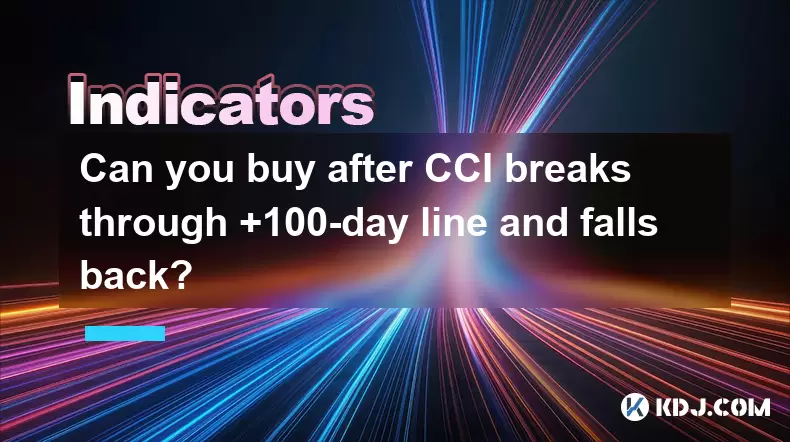
Understanding the CCI Indicator and Its Role in Trading
The Commodity Channel Index (CCI) is a popular technical analysis tool used to identify overbought or oversold conditions in the market. It oscillates above and below a zero line, with levels typically set at +100 and -100 as thresholds for potential trend reversals. When the CCI breaks through the +100 level, it often signals that an asset may be overbought, indicating a possible pullback. However, traders frequently ask: can you buy after the CCI breaks through the +100-day line and then falls back?
This question suggests a reversal strategy where traders wait for momentum to subside before entering a position. The logic behind this approach lies in avoiding false breakouts and ensuring that price action confirms the signal.
Interpreting the CCI Breakthrough and Retracement
When the CCI crosses above +100, it reflects strong upward momentum in the market. This situation is commonly seen during bullish phases in cryptocurrencies like Bitcoin or Ethereum, where rapid price surges trigger overbought readings. However, a simple breakout above +100 doesn't guarantee continued strength. In many cases, the indicator quickly retraces back toward the +100 mark or even dips below it.
Traders who are considering buying after such a retrace look for confirmation that the uptrend is still intact. This involves checking whether the price has maintained its support levels and whether other indicators, such as moving averages or volume, support a continuation of the trend. The key is to avoid premature entries based solely on the CCI reading without confirming signals from other tools.
Steps to Evaluate a Buy Signal After CCI Falls Back
- Monitor the CCI crossing above +100: Wait until the indicator moves beyond this threshold to confirm strong momentum.
- Observe the subsequent drop back to +100: Track how the CCI behaves as it returns to the critical level.
- Check for price behavior near the retracement zone: Look for candlestick patterns, such as bullish engulfing or hammer formations, that suggest buyers are stepping in.
- Verify with additional indicators: Use moving averages (e.g., 20 EMA), RSI, or MACD to confirm that the overall trend remains bullish.
- Analyze volume: A spike in volume during the retracement can indicate institutional or large retail interest returning to the market.
- Set entry points just above the retracement level: Place a buy order slightly above the CCI's return point to ensure execution once the indicator resumes its upward movement.
Each of these steps helps filter out noise and false signals, increasing the probability of a successful trade when buying after CCI breaks through +100 and falls back.
Applying This Strategy in Cryptocurrency Markets
Cryptocurrency markets are known for their volatility and fast-moving trends, making the CCI particularly useful. During bull runs, altcoins often experience rapid price increases followed by quick corrections. Traders who understand how to read the CCI in these scenarios can benefit from well-timed entries.
For example, if Ethereum’s CCI spikes above +100 during a breakout phase but then pulls back to the same level within a few hours, a trader might interpret this as a consolidation phase rather than a reversal. If the price holds above a key moving average and volume picks up again, this could present a favorable buying opportunity.
However, caution is necessary due to the high volatility. In some cases, what appears to be a retracement could turn into a deeper correction. Therefore, using stop-loss orders and maintaining proper risk management becomes crucial when implementing this strategy in crypto trading.
Real-Time Chart Analysis and Trade Execution
To execute this strategy effectively, real-time chart monitoring is essential. Using platforms like TradingView or Binance’s native tools, traders can overlay the CCI with other indicators and draw trendlines to visualize potential entry zones.
Here’s how to set up your chart:
- Add the CCI indicator with default settings (period 14).
- Overlay a 20-period exponential moving average (EMA) to gauge short-term trend direction.
- Apply volume bars to observe buying pressure during retracements.
- Draw horizontal lines at the +100 and -100 levels for visual clarity.
Once all components are in place, watch for instances where the CCI breaches +100 and then retreats. Pay attention to how price reacts around the same level. If candles start showing bullish structure and volume increases, consider placing a limit buy order just above the retracement point.
Frequently Asked Questions
Q: Is the CCI more effective on higher timeframes like 4-hour or daily charts?
A: Yes, the CCI tends to provide more reliable signals on higher timeframes because they filter out short-term noise and offer clearer trend definitions.
Q: Can I use the CCI alone for trading decisions?
A: While the CCI is a powerful tool, relying solely on it can lead to false signals. Always combine it with other indicators like moving averages, RSI, or MACD for better accuracy.
Q: What should I do if the CCI breaks +100 but price doesn’t follow suit?
A: This divergence can signal weakening momentum. Avoid taking trades in the direction of the CCI breakout and instead prepare for a potential reversal or sideways movement.
Q: How do I manage risk when buying after a CCI retrace?
A: Set a stop-loss just below the recent swing low or the moving average you’re using. Also, consider allocating only a small percentage of your portfolio to each trade to mitigate losses.
Disclaimer:info@kdj.com
The information provided is not trading advice. kdj.com does not assume any responsibility for any investments made based on the information provided in this article. Cryptocurrencies are highly volatile and it is highly recommended that you invest with caution after thorough research!
If you believe that the content used on this website infringes your copyright, please contact us immediately (info@kdj.com) and we will delete it promptly.
- Coinbase, Wrapped Tokens, and Base Network: A New Era for Cross-Chain DeFi?
- 2025-06-26 21:10:14
- BNB Price Check: Can Binance Coin Reserves Fuel a Rally to $800?
- 2025-06-26 20:25:12
- PEPD, Memes, and Ethereum: A New Era of Meme Utility?
- 2025-06-26 20:25:12
- Pepe Dollar vs. Pepecoin: The Meme Coin Evolution
- 2025-06-26 20:50:12
- Fartcoin, Coinbase, and Crypto Mortgages: What in the World?
- 2025-06-26 20:50:12
- Pi Coin, AI Speculation, and Pi2Day 2025: What's the Buzz?
- 2025-06-26 21:30:12
Related knowledge
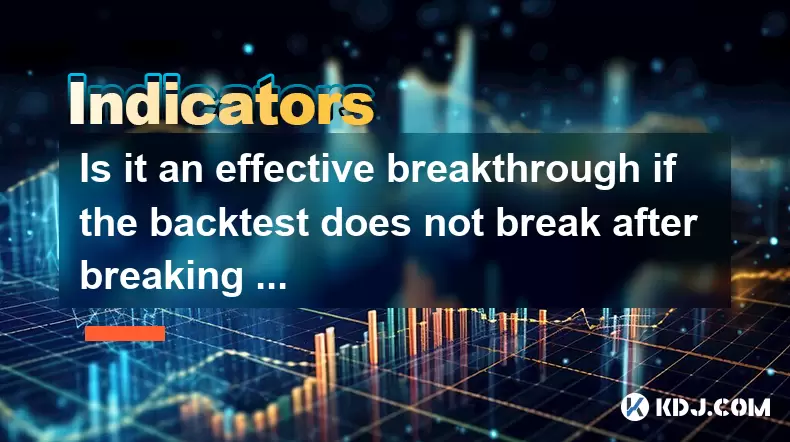
Is it an effective breakthrough if the backtest does not break after breaking through the neckline?
Jun 26,2025 at 10:08pm
Understanding the Role of Blockchain in Secure TransactionsBlockchain technology is at the heart of secure cryptocurrency transactions. Each block contains a list of transactions, and once recorded, altering past blocks becomes nearly impossible without network consensus. This immutability ensures that once a transaction is confirmed, it cannot be rever...
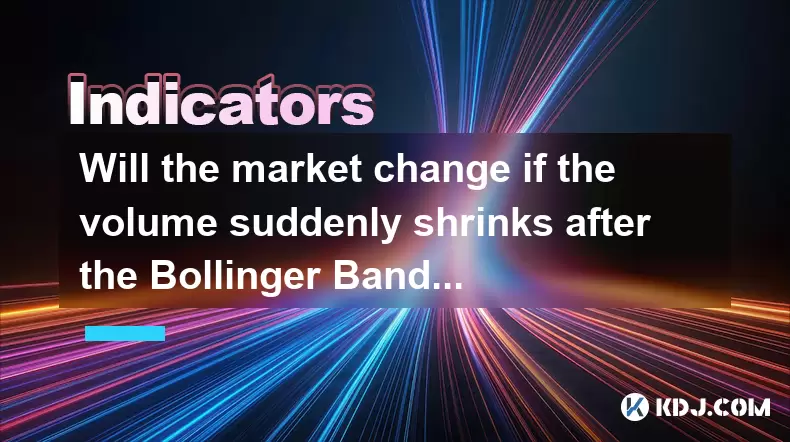
Will the market change if the volume suddenly shrinks after the Bollinger Bands open?
Jun 26,2025 at 09:56pm
Understanding the Bollinger Bands MechanismBollinger Bands are a widely used technical analysis tool that consists of a moving average and two standard deviation lines plotted above and below it. These bands dynamically adjust to price volatility, expanding during periods of high market activity and contracting when volatility decreases. Traders use thi...
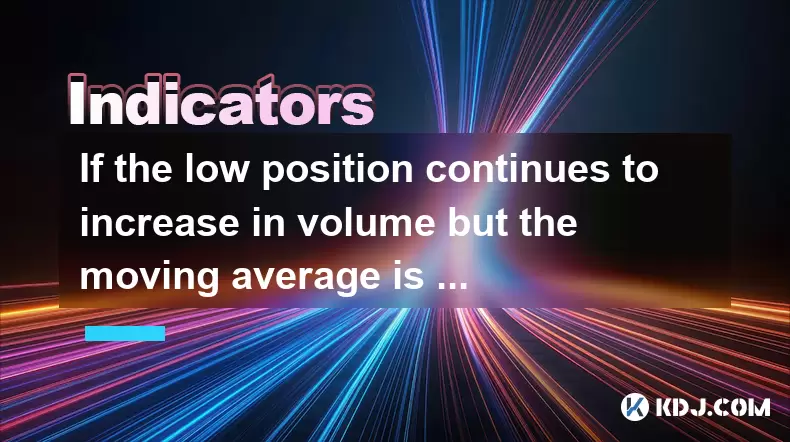
If the low position continues to increase in volume but the moving average is still short, should we wait and see?
Jun 26,2025 at 08:07pm
Understanding the Scenario: Low Position with Increasing VolumeIn the cryptocurrency market, traders often encounter situations where a particular asset is trading at a relatively low price level (referred to as a 'low position'), yet there is a noticeable increase in trading volume. This phenomenon can be confusing because it suggests that more market ...
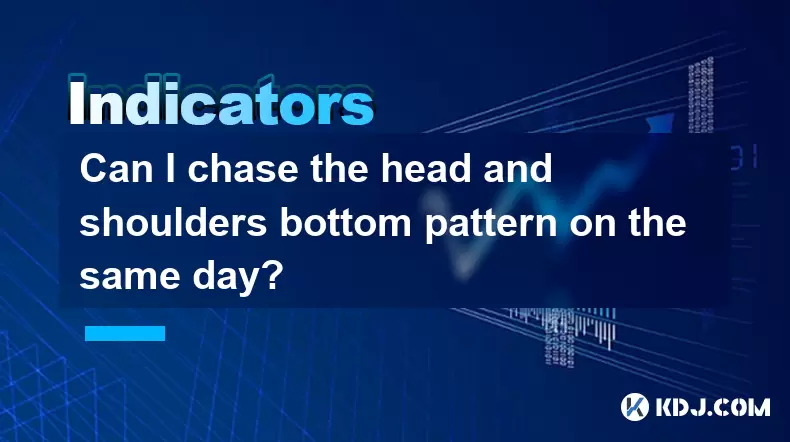
Can I chase the head and shoulders bottom pattern on the same day?
Jun 26,2025 at 06:14pm
Understanding the Head and Shoulders Bottom Pattern in Cryptocurrency TradingThe head and shoulders bottom pattern, also known as the inverse head and shoulders, is a reversal chart pattern commonly observed in cryptocurrency price charts. It signals a potential shift from a downtrend to an uptrend. The structure consists of three distinct lows: the lef...

What should I do if the 10-day line turns downward but the monthly line is still upward?
Jun 26,2025 at 08:56pm
Understanding the 10-Day and Monthly Moving AveragesIn cryptocurrency trading, moving averages are among the most widely used technical indicators. The 10-day moving average (MA) reflects short-term price trends, while the monthly moving average, often calculated over 30 days, represents long-term market sentiment. When the 10-day line turns downward, i...
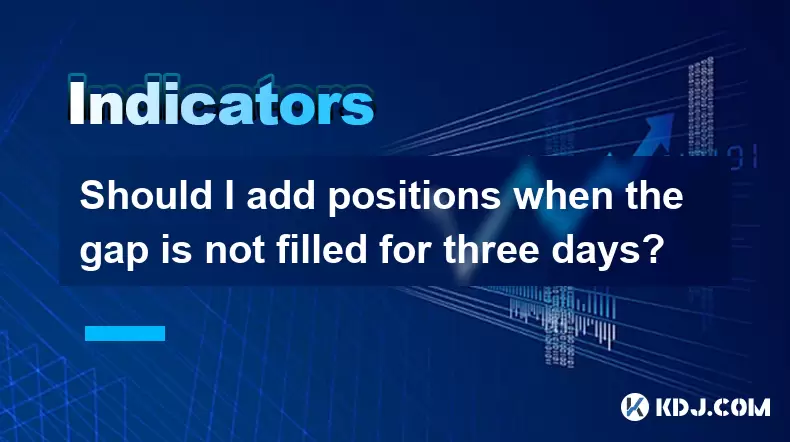
Should I add positions when the gap is not filled for three days?
Jun 26,2025 at 07:49pm
Understanding the Concept of Gaps in Cryptocurrency TradingIn cryptocurrency trading, a gap occurs when the price of an asset opens significantly higher or lower than its previous closing price, with no trading activity taking place in between. This phenomenon is common due to the 24/7 nature of crypto markets and external events such as news releases, ...

Is it an effective breakthrough if the backtest does not break after breaking through the neckline?
Jun 26,2025 at 10:08pm
Understanding the Role of Blockchain in Secure TransactionsBlockchain technology is at the heart of secure cryptocurrency transactions. Each block contains a list of transactions, and once recorded, altering past blocks becomes nearly impossible without network consensus. This immutability ensures that once a transaction is confirmed, it cannot be rever...

Will the market change if the volume suddenly shrinks after the Bollinger Bands open?
Jun 26,2025 at 09:56pm
Understanding the Bollinger Bands MechanismBollinger Bands are a widely used technical analysis tool that consists of a moving average and two standard deviation lines plotted above and below it. These bands dynamically adjust to price volatility, expanding during periods of high market activity and contracting when volatility decreases. Traders use thi...

If the low position continues to increase in volume but the moving average is still short, should we wait and see?
Jun 26,2025 at 08:07pm
Understanding the Scenario: Low Position with Increasing VolumeIn the cryptocurrency market, traders often encounter situations where a particular asset is trading at a relatively low price level (referred to as a 'low position'), yet there is a noticeable increase in trading volume. This phenomenon can be confusing because it suggests that more market ...

Can I chase the head and shoulders bottom pattern on the same day?
Jun 26,2025 at 06:14pm
Understanding the Head and Shoulders Bottom Pattern in Cryptocurrency TradingThe head and shoulders bottom pattern, also known as the inverse head and shoulders, is a reversal chart pattern commonly observed in cryptocurrency price charts. It signals a potential shift from a downtrend to an uptrend. The structure consists of three distinct lows: the lef...

What should I do if the 10-day line turns downward but the monthly line is still upward?
Jun 26,2025 at 08:56pm
Understanding the 10-Day and Monthly Moving AveragesIn cryptocurrency trading, moving averages are among the most widely used technical indicators. The 10-day moving average (MA) reflects short-term price trends, while the monthly moving average, often calculated over 30 days, represents long-term market sentiment. When the 10-day line turns downward, i...

Should I add positions when the gap is not filled for three days?
Jun 26,2025 at 07:49pm
Understanding the Concept of Gaps in Cryptocurrency TradingIn cryptocurrency trading, a gap occurs when the price of an asset opens significantly higher or lower than its previous closing price, with no trading activity taking place in between. This phenomenon is common due to the 24/7 nature of crypto markets and external events such as news releases, ...
See all articles
























































































